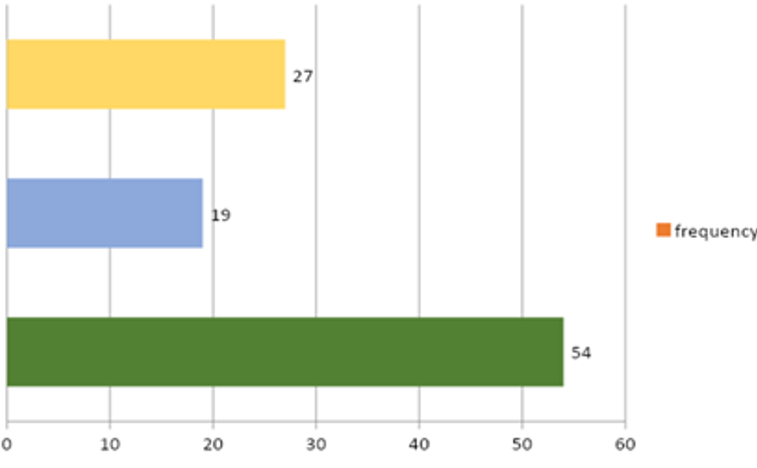Abstract
Physical activity is also defined as a bodily movement which is produced by skeletal muscles that require energy expenditure. The Daily physical activity can reduce the risk factors such as hypertension, coronary heart disease, and juvenile diabetes mellitus, improves functional health and weight control. Due to lack of physical activity, the children can become overweight or obese. To find the association of physical activity with flexibility in healthy, overweight and obese children. Non-experimental, observational study and 100 samples were taken based on inclusion criteria to find the association of physical activity on flexibility in normal, overweight, obese children, between the age group of 11 - 13 years by using physical activity questionnaire (PAQ-C), Body Mass Index in percentile and, sit and reach test as outcome measures. The study setting was Sree Sankara Bala Vidhyalaya School. The physical activity ques- tionnaire was given to them and asked to fill the (PAQ-C) questionnaire, and the flexibility of each child was checked by sit and reach test. The score of the questionnaire and sit and reach test value was recorded. The results showed that there was no significant association in physical activity and flexibility in overweight and obese children. Whereas the physical activity was low among obese children than healthy weight and overweight children, and the flexibility was low among healthy children.
Full text article
References
Abbott, R. A., Davies, P. S. W. 2004. Habitual physical activity and physical activity intensity: their relation to body composition in 5.0–10.5-y-old children. European Journal of Clinical Nutrition, 58(2):285–291.
Anderson, Y. C., Wynter, L. E., Grant, C. C., Stewart, J. M., Cave, T. L., Wild, C. E. K., Derraik, J. G. B., Cut- field, W. S., Hofman, P. L. 2017. Physical activity is low in obese New Zealand children and adolescents. Scientific Reports, 7(1):1–7.
Anmol, G., Randhir, K., Vishal, S., Goel, R. K., Chetal, A., Singh, J. 2016. Pattern of Physical Activity among School Going Adolescents (10-18 Years) in District Ambala. International Journal of Health Sciences and Research (IJHSR), 6(2):59–64.
Biddle, S. J., Gorely, T., Stensel, D. J. 2004. Health- enhancing physical activity and sedentary behaviour in children and adolescents. Journal of Sports Sciences, 22(8):679–701.
Branca, F., Nikogosian, H., Lobstein, T. 2007. The challenge of obesity in the WHO European Region and the strategies for response: summary. World Health Organization. pages 6-76.
Daniels, S. R., Arnett, D. K., Eckel, R. H., Gidding, S. S., Hayman, L. L., Kumanyika, S., Williams, L, C. 2005. Overweight in children and adolescents: patho- physiology, consequences, prevention, and treatment. Circulation, 111(15):1999–2012.
El-Bayoumy, I., Shady, I., Lotfy, H. 2009. Prevalence of Obesity Among Adolescents (10 to 14 Years) in Kuwait. Asia Pacific Journal of Public Health, 21(2):153–159.
Jurakić, D., Ž Pedišić 2012. Prevalence of insufficient physical activity in children and adolescents. Paediatria Croatica, 56(4):321–327.
Lee, Y. S. 2009. Consequences of childhood obesity. Ann Acad Med, 38(1):75–82.
Lipnowski, S., Leblanc, C. M. 2012. Canadian Paediatric Society, & Healthy Active Living and Sports Medicine Committee. Paediatrics & child health, 17(4):209–210.
Lobstein, T., Rigby, N., Leach, R. 2005. EU plat- form on diet, physical activity and health. Inter- national Obesity Task Force EU Platform Briefing Paper. pages 1–9, Brussels.
Mokdad, A. H., Ford, E. S., Bowman, B. A., Dietz, W. H., Vinicor, F., Bales, V. S., Marks, J. S. 2001. Prevalence of obesity, diabetes, and obesity-related health risk factors. Jama, 289(1):76–79.
Myers, L., Strikmiller, P. K., Webber, L. S., Bereson, G. S. 1996. Physical and sedentary activity in school children grades 5-8: the Bogalusa Heart Study. Medicine & Science in Sports & Exer- cise, 28(7):852–859.
Page, A., Cooper, A. R., Stamatakis, E., Foster, L. J., Crowne, E. C., Sabin, M., Shield, J. P. H. 2005. Physical activity patterns in nonobese and obese children assessed using minute-by-minute accelerometry. International Journal of Obesity, 29(9):1070– 1076.
Pearson, N., Braithwaite, R. E., Biddle, S. J. H., van Sluijs, E., Atkin, A. J. 2014. Associations between sedentary behaviour and physical activity in children and adolescents: a meta-analysis. Obesity Reviews, 15(8):666–675.
Pradinuk, M., Chanoine, J. P., Goldman, R. D. 2011. Obesity and physical activity in children. Canadian Family Physician, 57(7):779–782.
Raistenskis, J., Sidlauskiene, A., Strukcinskiene, B., Baysal, S. U., Buckus, R. 2016. Physical activity and physical fitness in obese, overweight, and normal weight children. Turkish Journal of Medical Sciences, 46(2):443–450.
Rani, M. A., Sathiyasekaran, B. W. C. 2013. Behavioural Determinants for Obesity: A Cross-sectional Study Among Urban Adolescents in India.
Robinson, T. N. 2008. Children, television viewing, and weight status: summary and recommendations from an expert panel meeting. The ANNALS of the American Academy of Political and Social Sci- ence, 615(1):119–151.
Serdula, M. K., Ivery, D., Coates, R. J., Freedman, D. S., Williamson, D. F., Byers, T. 1993. Do Obese Children Become Obese Adults? A Review of the Literature. Preventive Medicine, 22(2):167–177.
Sothern, M. 1999. Motivating the obese child to move: the role of structured exercise in pediatric weight management. Southern Medical Journal, 92(6):577–84.
Strong, W. B., Malina, R. M., Blimkie, C. J., Daniels, S. R., Dishman, R. K., Gutin, B., Hergenroeder, A. C., Must, A., Nixon, P. A., Pivarnik, J. M., Rowland, T., Trost, S., Trudeau, F. 2005. Evidence Based Physical Activity for School-age Youth. The Journal of Pediatrics, 146(6):732–737.
Wells, K. F., Dillon, E. K. 1952. The Sit and Reach—A Test of Back and Leg Flexibility.
WHO 2011. Global recommendations on physical activity for health 18 to 64 years old.
Authors

This work is licensed under a Creative Commons Attribution-NonCommercial-NoDerivatives 4.0 International License.

